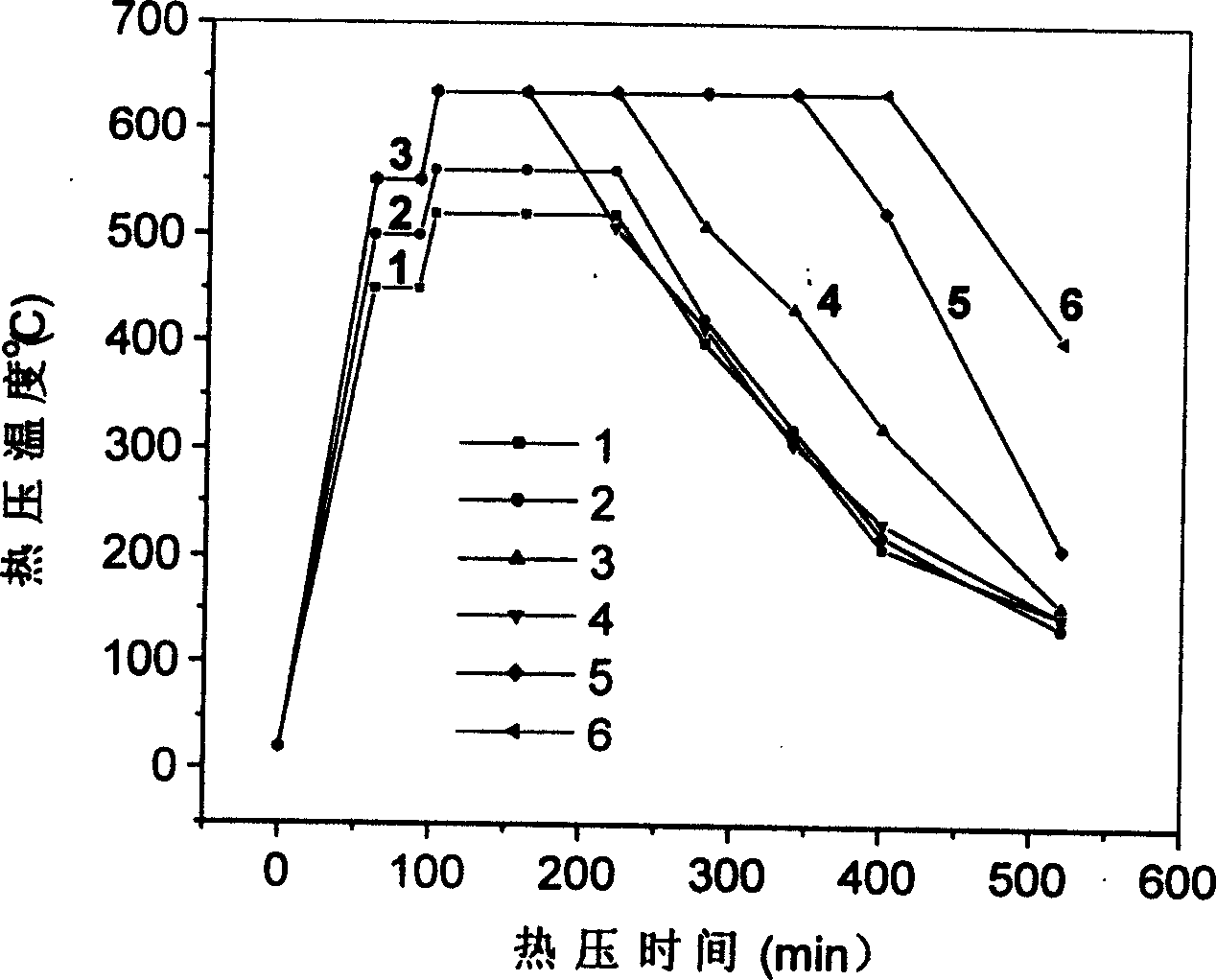Preparation method of Ti-AL-Ti multi-layer laminated composite material
A layered composite material and composite material technology, applied in the field of preparation of Ti-Al-Ti multilayer layered composite materials, can solve problems such as high cost, interface pollution, and unsatisfactory density, and achieve a simple and easy production process , low cost, good effect of interface combination
- Summary
- Abstract
- Description
- Claims
- Application Information
AI Technical Summary
Problems solved by technology
Method used
Image
Examples
Embodiment 1
[0025] Such as figure 1 , 2 As shown, Ti foil and Al foil are taken as raw materials, firstly treated by surface (cleaning), then Ti foil and Al foil are alternately stacked, and then immediately placed in a mold for vacuum hot pressing of multi-layer laminated composites. Specifically, follow the steps below:
[0026] 1) Surface treatment of raw materials: the raw materials are Ti foil (TAl) and Al foil (L3), and the original thicknesses are 110 μm and 100 μm respectively. First, use petroleum ether to scrub the oil on the surface of Ti foil and Al foil; 50°C, 10% NaOH aqueous solution alkali washing for 10 minutes, take it out, rinse with water for 5 minutes, and then put it in 30% dilute nitric acid solution for 5 minutes to neutralize the remaining alkali and avoid the alkali solution from continuing to corrode the Al matrix , then rinse with clean water and dry; use 10% HNO for Ti foil 3 - Pickling with HF aqueous solution for 15 minutes, rinsing with water for 5 minut...
Embodiment 2
[0032] The difference from Example 1 is:
[0033] 1) Scrub the oil on the surface of Ti foil and Al foil with petroleum ether; wash the Al foil with 20% NaOH aqueous solution at a temperature of 30°C for 20 minutes, take it out, rinse it with clean water for 5 minutes, and then place it in 20% dilute nitric acid Perform photochemical treatment in the solution for 10 minutes, then rinse with clean water and dry; use 15% HNO for Ti foil 3 - Pickle with HF aqueous solution for 10 minutes, rinse with water for 5 minutes, and dry;
[0034] 2) The surface-treated metal foils are alternately stacked and placed in a total of 11 layers, the uppermost and the lowermost of which are both Al foil; in order to prevent the foil from spreading, a layer of Ti foil can be wrapped outside to make a hot-pressed sample spare;
[0035] 3) During vacuum hot pressing, the pressurization speed is 0.5 tons / minute, the pressure is 60Mpa, and the pressure is kept for 2 hours; the reaction temperature ...
Embodiment 3
[0039] The difference from Example 1 is:
[0040] 1) Scrub the oil stains on the surface of Ti foil and Al foil with acetone; Al foil is washed with 20% NaOH aqueous solution at a temperature of 30°C for 20 minutes, then taken out, rinsed with water for 5 minutes, and then placed in 20% dilute nitric acid solution Carry out photochemical treatment for 10 minutes, rinse with clean water, and blow dry; use 15% HNO for Ti foil 3 - Pickle with HF aqueous solution for 10 minutes, rinse with water for 5 minutes, and dry;
[0041] 2) The surface-treated metal foils are alternately stacked and placed in a total of 41 layers, the uppermost and lowermost of which are both Al foils; when vacuum hot pressing, the pressing speed is 0.5 tons / min, the pressure is 60Mpa, and the pressure is 1 hour; the present embodiment reaction temperature is set at 635 ℃, for preventing the furnace temperature from rising too fast and exceeding the set reaction temperature, it can be kept at 70 ℃ below th...
PUM
| Property | Measurement | Unit |
|---|---|---|
| Thickness | aaaaa | aaaaa |
| Thickness | aaaaa | aaaaa |
| Yield strength | aaaaa | aaaaa |
Abstract
Description
Claims
Application Information
 Login to view more
Login to view more - R&D Engineer
- R&D Manager
- IP Professional
- Industry Leading Data Capabilities
- Powerful AI technology
- Patent DNA Extraction
Browse by: Latest US Patents, China's latest patents, Technical Efficacy Thesaurus, Application Domain, Technology Topic.
© 2024 PatSnap. All rights reserved.Legal|Privacy policy|Modern Slavery Act Transparency Statement|Sitemap



